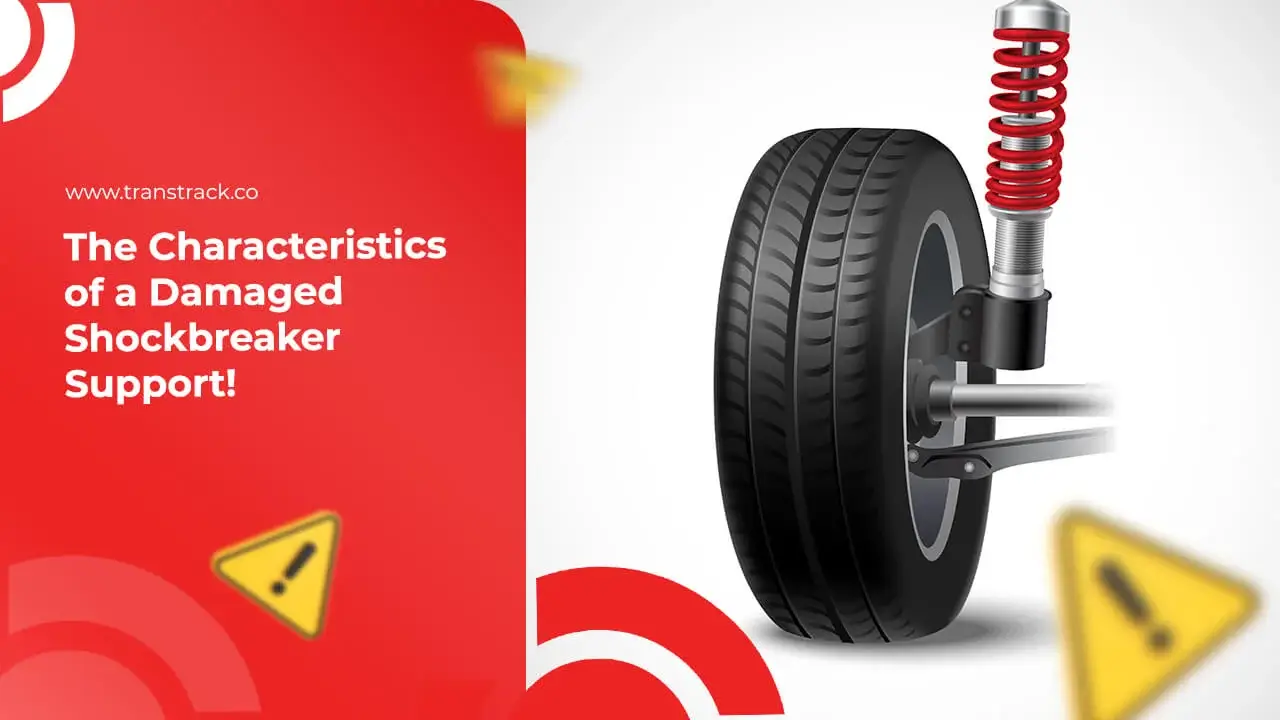The Characteristics of a Damaged Shockbreaker Support!

When it comes to driving comfort and safety, one crucial element that is often overlooked is the suspension system, specifically the shockbreaker support. Although its presence may be hidden behind the vehicle panel, the role of this component is vital in maintaining stability, handling, and comfort during the journey.
This article TransTRACK will discuss in depth the importance of shockbreaker support in maintaining the balance of your vehicle. From its main function to the characteristics of damage that need to be considered, we will outline everything you need to know to ensure that the components in your vehicle are in optimal condition.
Let’s explore more about the important role that support shockbreakers play in ensuring that your ride stays safe and comfortable.
Characteristics of Damaged Shockbreaker Support
The characteristics of a damaged shockbreaker support are as follows:
Rubber Condition is Brittle
Hardened or brittle rubber conditions can occur due to age or exposure to extreme weather. Hardened rubber will lose its elasticity, so it can no longer absorb shocks from the road effectively. As a result, the vehicle’s suspension performance will degrade, and the driver will feel every unevenness in the road surface, even small shocks.
Noises and Strange Sounds
Noisy and strange sounds heard while driving can be caused by various factors, one of which is damage to the components in the shockbreaker support. For example, worn or damaged bushings can cause abnormal friction between suspension parts, resulting in unusual noises. A “clunk” or “thud” sound when going over bumps or potholes on the road is a common example of this symptom.
Steering Feels More Difficult
A damaged shockbreaker support will not be able to maintain vehicle stability properly. This can make it difficult to control the direction of the vehicle, especially when going around corners or performing other maneuvers. A sensation of “drifting” or “moving uncontrollably” can also be felt, especially at high speeds, as the vehicle no longer has sufficient stability.
Steering Wheel Leans to Only One Side
When the vehicle’s steering wheel leans or tilts to only one side while driving, it could indicate an imbalance in the suspension system. One side may have suffered more damage or wear than the other. This can result in uneven load distribution on the wheels, which in turn will make the vehicle’s steering wheel feel tilted in a certain direction.
By understanding these characteristics, you can more easily identify whether your vehicle’s shockbreaker support is damaged or not. If you experience these symptoms, immediately check with a trusted workshop or mechanic to carry out further checks and necessary repairs so that driving safety and comfort are maintained.
Causes of Damaged Shockbreaker Support
Here are some common causes of shockbreaker support damage:
Reckless Driving
Rough or reckless driving, such as jumping over bumps or potholes at high speeds, can put excessive stress on the suspension system, including the shockbreaker support. This can cause wear or damage to suspension components, including bushings, shock absorbers, or struts.
Suspension Modifications
Modifications made to a vehicle’s suspension, such as the installation of low-region perches or coilovers that do not match the manufacturer’s original specifications, can cause uneven loads on these components. If the suspension is modified without proper consideration, it can result in excessive stress on the suspension components and accelerate wear and tear.
Use of Non-Original Parts
Using aftermarket or non-original parts to replace suspension parts can potentially cause problems. Non-original parts may be of poor quality or not match the specifications required by the vehicle, increasing the risk of damage to these components.
Exceeding the Use Life Limit
As with other vehicle components, shockbreaker supports also have a limited lifespan. Continued use of the vehicle without performing adequate maintenance or timely replacement can cause wear and tear on these components. Wear life can vary depending on factors such as vehicle type, road conditions, and usage patterns.
By understanding these causes, drivers can take appropriate preventive measures to maintain the health and performance of these components. This includes driving carefully, performing regular maintenance, using parts that match the manufacturer’s specifications, and replacing the shockbreaker support according to the schedule recommended by the vehicle manufacturer.
In maintaining the performance of your vehicle, proper maintenance is key to ensuring safety and comfort while driving. One important aspect of vehicle maintenance is checking and maintaining the suspension system, including the shockbreaker support.
By using advanced technology such as TransTRACK’s Vehicle Maintenance System, you can easily organize your vehicle’s maintenance schedule. This system allows you to regularly monitor the condition of your shockbreaker support and other suspension components, and notifies you when it’s time for maintenance or replacement.
Don’t let a broken shockbreaker support disrupt your driving experience. With TransTRACK, you can ensure your vehicle is always in the best condition, so you can drive confidently and safely. Take advantage of TransTRACK to maintain the performance and reliability of your vehicle!
Topic





